
The three team members in front of Darbar Square in the night
As we entered the Kathmandu valley and made our way into the three adjoining cities of Kathmandu, Bhaktapur and Patan, it was abundantly evident that we had reached the political and cultural centre of Nepal. We parked ourselves at a hotel near the historic Darbar Square, close to the tourist district of Thamel, as Prashant Jha, consulting editor of Himal, helped fix our political itinerary of meetings with leading lights of the major political parties, public intellectuals and the representatives of commerce and industry.
Madhesi Concerns
The first of our series of meetings was with Upendra Yadav, chairman of the Mad
 hesi Janadhikar Forum (MJF). He gave us an overview of the “discrimination” faced by the Madhesis owing to “Pahadi racism”, as he put it. Reeling off statistics about Madhesi under-representation in Nepal’s politico-economic-administrative structure, he made a case for a single autonomous state to be carved out of the Terai region and “self rule” that would help address the concerns of the Madhesis. When reminded that the Tharus and other sections of the inner and outer Terai had reservations about a single Madhes state, Yadav was dismissive; according to him, this was part of a “conspiracy to divide Madhes”. It “was in the Tharus’ interest to have a separate Madhes and they were misled by the Maoists during the elections”, he argued.
hesi Janadhikar Forum (MJF). He gave us an overview of the “discrimination” faced by the Madhesis owing to “Pahadi racism”, as he put it. Reeling off statistics about Madhesi under-representation in Nepal’s politico-economic-administrative structure, he made a case for a single autonomous state to be carved out of the Terai region and “self rule” that would help address the concerns of the Madhesis. When reminded that the Tharus and other sections of the inner and outer Terai had reservations about a single Madhes state, Yadav was dismissive; according to him, this was part of a “conspiracy to divide Madhes”. It “was in the Tharus’ interest to have a separate Madhes and they were misled by the Maoists during the elections”, he argued.On the caste question and the question of radical land reform Yadav was evasive, saying that social and economic transformation was secondary to the ushering in of a truly federal structure. Indeed, he did not believe that the Maoist model of economic redistribution was necessary in the Terai; all that was required was the infusion of investment and scientific inputs in agriculture. Yadav scoffed at the allegation that India had a role to play in stoking the Madhesi identity issue, saying that India had always sided with the Nepali ruling classes of pahadi origins.
Regarding the Terai Madhesi Loktantrik Party (TMLP), the other Madhesi outfit that had done quite well in the constituent assembly elections, we were told that the TMLP was dominated by an upper caste leadership in contrast to the backward caste dominated MJF. But clearly, the strong performance of the Madhesi parties had ensured that the issue of identity and representation was going to be high on the agenda of the deliberations in the constituent assembly. The Maoists in particular had a federal model of autonomy that addressed headlong the questions of ethnicity and representation as well as redistribution.
Leading Figure of the CPN(M)
In the immediate, what kind of political and economic system did the Communist Party of Nepal (Maoist) [CPN(M)] have in mind for the republic of Nepal? A twohour conversation with Baburam Bhattarai, senior standing committee member of the politburo of the party helped clarify what the Maoists had in mind on the political and economic fronts.
We started our conversation with Bhattarai on the Maoist handling of the identity issue. Bhattarai felt that by taking up the cause of the janajatis and the dalits, the Maoists had won their staunch support, in the process empowering them in the course of the political struggle. On being asked as to why the Madhesi parties had halted the sweep of Maoist forces in many parts of the Terai, he mentioned that the people’s war was concentrated in the hills; it will take the Maoists some time to consolidate their presence in the Terai. The Maoists had articulated the issue of representation for the Madhesis along with radical social and agrarian reform and that was why the underprivileged such as the dalits and the landless had voted for them, even in the Terai. The Madhesi parties were particularly strong in one area of the Terai, Bhojpura, contiguous with the Bhojpuri-speaking parts of Bihar in India, but he was confident of “politically addressing the concerns of these people and winning them over”.
The conversation drifted towards larger questions: the “triangular ordering of the three contending class forces in Nepal, that of the monarchy representing feudalism and the comprador bourgeoisie, the parliamentary parties representing the small and weak (national) bourgeois class, and the revolutionary forces, the proletariat, the semi-proletariat and the poor peasantry, represented by the Maoists”. This “triangular class contention turned into a bipolar one after the initiation and development of the people’s war; the parasitic reactionary classes were polarised on one side, and on the other side were the progressive forces – the bourgeois class represented by the parliamentary parties and working people represented by the Maoists”. The Maoists had always emphasised a combination of mass and military approaches keeping in mind the “balance of (aforementioned) class forces”.
The phase of the people’s war, which entailed sacrifice and led to the loss of many lives, was in hindsight justified as it had achieved the abolition of the monarchy and the breaking of the back of feudalism, Bhattarai asserted. It is but obvious that over time the contradictions between the bourgeois forces and the Maoists are bound to lead to open con- flict; the Maoists were however con fident of handling this through the “continued support of the masses”. As for the masses themselves, their “expectations were huge”. This was one of the “two main challenges” of the present, the other being the “reactionary forces ganging up against Maoist rule” or sabotage of the current peace process, something that was already underway, he cautioned. “Crucial” to the writing of a progressive constitution was the “unity of the left forces” in Nepal, he emphasised.
On the question of development, he said that the primary focus in policymaking would remain “industrial capitalism – development of industrial capitalism – oriented towards socialism”. A pro-people and pro-poor government was necessary to transform underdeveloped Nepal and the Maoists were “studying the experiences of left-led governments in India”, Bhattarai said. Dependence on foreign aid routed through non-governmental organisations was a problem as these bodies were not accountable to the people. The Maoists would regulate the inflow of such aid and carefully route it to relevant areas, he said.

Bhattarai dismissed the demands to disband the Young Communist League (YCL) and expressed surprise that even a left party like the Communist Party of Nepal (Unified Marxist-Leninist) [CPN(UML)] had made such a demand. He said that the Maoists were willing to work for a radical constitution through the application of consensus, but at the same time, “would not give up basic issues such as land reform, particularly in the Terai”. He expected that the “coalition of reactionary forces allied with imperialism could hinder the process of writing the new constitution”.
Left Unity: Need of the Hour
Our next meeting was with Shyam Shrestha, former chief editor of Mulyankan, a left monthly magazine with a circulation of around 30,000 copies, and an active proponent of broad left unity. “Civil society” had an important role to play in the anti-monarchy protests and the eventual mass opposition to the emergency (the jan andolan II of April 2006), said Shyam Shrestha, when we met him at his home in Kirtipur, a picturesque suburb in the Kathmandu valley. “Kirtipur was the hub of the pro-democracy protests of 1989 and it was no different in 2006”, Shrestha emphatically mentioned. Along with other civil society activists, Shrestha had helped orchestrate the mass protests against the emergency and worked towards getting the mainstream parties, the Nepali Congress (NC) and the CPN(UML) together with the Maoists in a united struggle against the monarchy. He gave us an overview of the days leading to the lifting of the emergency and the spontaneous protests and blockades conducted by the people in and around Kathmandu, particularly along the Ring Road and in the blue-collar areas, such as Gongabu.
A prominent left intellectual, Shrestha was wary about the Maoists’ intention to foster industrial capitalism with foreign investment, worried that they would eventually follow essentially the same economic policies as the other mainstream political parties. On the criticism that the YCL was using strong-arm tactics, he suggested that this only happened in places where the local Maoist leadership was not “mature”. Above all, Shrestha felt that a broad left unity was the need of the hour in Nepal so that a “radical constitution” can be drafted by the constituent assembly.
Left Unity: Not for Now
But even as Shyam Shrestha strikes a chord for left unity, for a leading light of the CPN(UML), former general secretary, Madhav Kumar Nepal, this seems out of the question. Madhav Nepal is among the senior most communist leaders in the country and had a long tenure as general secretary of the party. In the course of the interview he gave us, he presented an elaborate overview of the left movement in Nepal. The CPN(UML)’s contribution to “people’s multiparty democracy” and their coming to power through the ballot were the party’s major accomplishments, he said. The party’s short-lived government in 1996 had undertaken a series of relief and development measures, enjoying the confidence of the people. However, an unfortunate split in the party had paved the way for the NC to entrench itself in power again; by the time the party reunited, it was too late to capture a majority, he pointed out.
As regards relations with the Maoists, he was committed to left unity in the country, but expressed deep anguish and anger against the activities of the YCL. He emphasised that despite the Maoist leadership’s repeated assurance to control their young cadre, the “cult of violence” unleashed against his party could not be tolerated any more. Support for coordinated action in drafting a new constitution was contingent upon the Maoist leadership containing its YCL cadre and this was the major sticking point in fraternal relations with the CPN(M), he argued. There were differences on the issue of federalism too; the carving of the country into federated regions based on ethnicity alone will not serve any purpose. Socio-political considerations and economic viability should govern any federal restructuring, apart from ethnicity, he said.
As we interacted with the people in the streets, taxi drivers, shopkeepers and others, we found that many who were formerly staunch supporters of the CPN(UML) had gravitated towards the Maoists. Despite positive memories of the short-lived CPN(UML) government in 1996, in the popular imagination, the party seemed to have lost its distinctiveness after having taken a series of vacillating and conciliatory political stands during the course of the people’s war.
Nepali Congress: Next Generation
We also met the spokesperson of the NC, Minendra Rijal. Interestingly, Rijal was critical of the Koirala leadership’s intention to continue in government. Rijal expressed his fears of a communist-led Nepal under the leadership of the Maoists. “We have no intention of letting Nepal become a communist state”, he said. The NC was also opposed to the integration of the People’s Liberation Army with the Nepal army. Rijal’s statements clearly established that sections of the NC, given their inherent antagonism towards the Maoists, were bent on destabilising the consensual peace process.
It was heartening to know that the younger generation of the NC, those who came into prominence during the jan andolan II of April 2006, were staunch republicans. One youth leader of the NC who had helped organise multiple rallies during the April movement and has been a popular campaigner since then was Gagan Thapa. We met him at a restaurant at Darbar Marg. Thapa had been active in student politics before his rise in prominence. He had actively campaigned during the CA elections, but was not given a ticket in the first past the post polls, only to be nominated to the assembly through the proportional representation route.
Thapa analysed the Maoist victory, saying how the areas which were under effective Maoist control during the “people’s war” phase were literally out of bounds for the NC and how the elected representatives from this region had virtually neglected any mass contact with the people. It was no wonder that the Maoists had won over large sections of people who had hitherto voted for the mainstream parties. He was critical of the NC’s senior leaders who vacillated on the demand for a republic by playing “old style conservative politics”. Only a resolution supported by party members who had participated in the 2005 movement could force the leadership to accept the demand for the declaration of a republic as one of the NC’s slogans.
There was a debate within the party whether or not to join the new government. He was frank enough to suggest that many of the old guard in the party were afraid of coming out of government as they were apprehensive that the Maoists would replace them in dispensing “patronage” once they took over the reins of power. The Maoist leadership had the strategic acumen as well as the organisational strength to remain in power for a long time by addressing the precarious living conditions of the people, he felt. He expected the NC to eventually occupy the liberal democratic space in Nepali politics. Gagan Thapa also gave us an insight into the hold of US and Indian diplomats over Nepali polity. He was concerned about international meddling in Nepali affairs during the constitutionmaking phase and asserted that the younger republican members of the NC would strive for a change in leadership and policies in the party. The Nepali Bourgeoisie During our stay, many of the main headlines and first page news in the major national dailies were about meetings between the Maoists and the representatives of commerce and industry. The main refrain was the assurances given by the Maoists about supporting national capital and forging public- private partnerships.
We met Shekhar Golchha, executive director with Golchha organisation, a big private manufacturing and trading company, the largest private employer in Nepal. We asked him about his concerns regarding the coming of a Maoist-led government to power. Golchha said that the end of the people’s war and the return to peace were positive steps. The recent verdict was for peace and he hoped that the Maoists would be able to ensure peace and stability which were necessary for business prosperity. He was under the impression, after talking to a section of the Maoist leadership, that labour-capital relations will be cordial once the Maoists came to power.
He was welcoming of the fact that the focus of the Maoists was to protect “national capital”; he wanted some amount of protection vis-a-vis foreign competition, but was also hoping for foreign investment in select areas, such as power infrastructure. He was also hopeful of expansion of the basket of goods from Nepal enjoying zero customs/import duty status in India. He was not quite appreciative of proposals for free trade and a common market as he was apprehensive of a flooding of the Nepali market with Indian goods, as companies in India had “greater economies of scale”. He also wanted foreign direct investment to be regulated and a preference for joint ventures with the participation of local firms.
Our next meeting was with Sujiv Shakya, a management consultant and president of Tara Management, a managing company handling several diversified businesses in Nepal, including the hydro power sector. Shakya was sceptical of the political processes in place under the leader ship of the Maoists. He was against any form of patronage that was inevitably a feature of Nepali polity. He did not want any form of political interference in any industrial activity and quoted the Indian experience of the last few years (laissez faire economic reforms) to buttress his argument. He particularly wanted labour reforms. The problem of implementation of big industrial projects was precisely due to the fact that it was difficult to underwrite such projects in times of political crisis. When we asked him about his opinion regarding the Maoists’ statements about the “development of industrial capitalism oriented towards socialism”, Shakya was dismissive and said that these moves were only going to encourage “crony capitalism”. We could thus get two views from the “representatives” of capital.
Towards a Vibrant Democracy
We now needed to take some time off and so we headed to the landmark places, particularly the Narayanhiti palace occupied by the king and the new venue for the constituent assembly in New Baneswor. We were particularly struck by the proximity of the Narayanhiti palace to the huge compound housing the United States embassy. Every political leader we talked to, every journalist who had inside information about the happenings in diplomatic circles expressed concern about interference by the Americans or the Indians as had happened in the past.
We were keen on travelling to the eastern parts too, but due to lack of time as well as a travel blockade in those areas, we had to cut short our visit and return to India. We took an unconventional route to Hethouda on the east-west highway and crossed the border through Birgunj into Bihar.
In our 15-day sojourn which ended on May 13, we were witness to history in the making in Nepal. Our meetings with farmers, labourers, guerrillas, industrialists, journalists, politicians, and representatives of the civil society were richly rewarding. Nepal’s transformation into a republic had been facilitated by the coming together of progressives, democrats and communists and because of the peoples’ overwhelming support for such a culmination. It was the collective effort of the long suppressed citizenry that brought the monarchy down.
The talk of diplomatic intrigue and international interference worried us the most. The possibility of sabotage of the process of building a radically new Nepal should not be underestimated as the country is seen by imperialists as a launching pad of destabilisation strategies against its neighbours, even as the latter see Nepal through the lens of competitive geopolitics. There is also the presence of threats from obscurantist forces within Nepal and in India. The historic endeavour of writing a constitution for the federal democratic republic of Nepal and building a self-reliant industrial economy rests on the ability of the polity to maintain the bonhomie and consensus generated in the peace process. The long march to a vibrant democracy in Nepal has just begun.
(End)
Series of articles published in Economic and Political Weekly

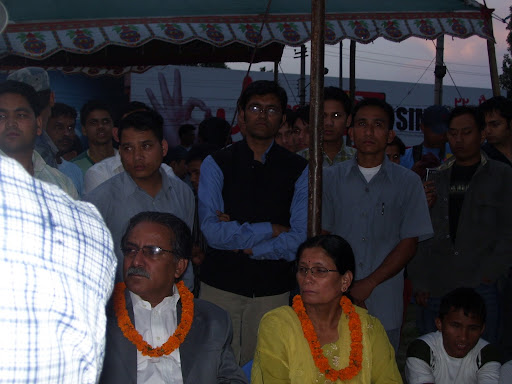

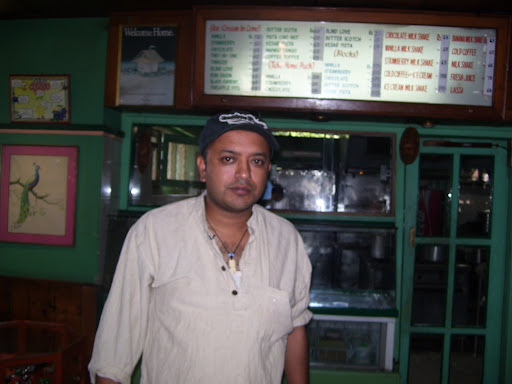
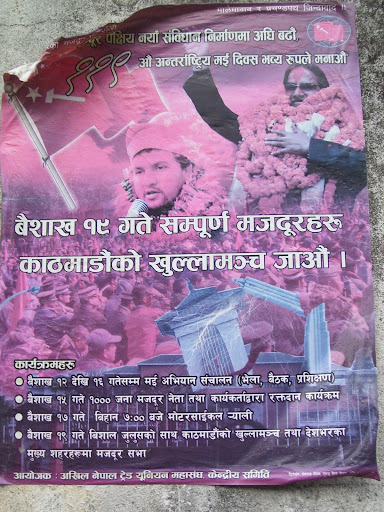
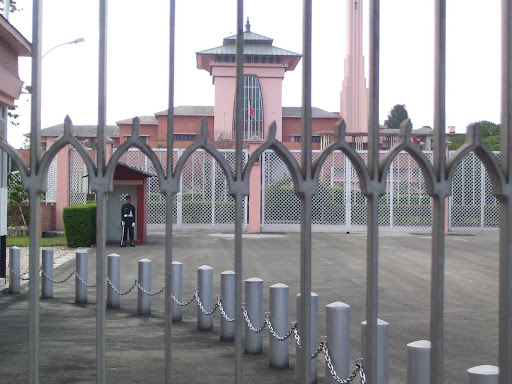
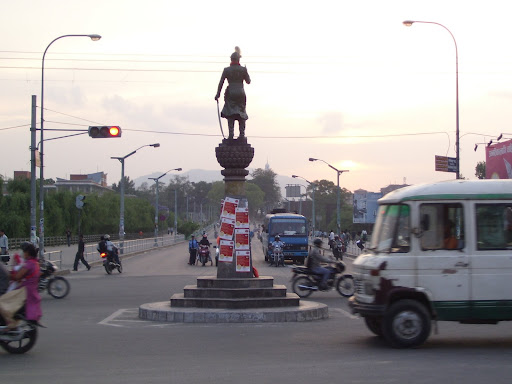
No comments:
Post a Comment